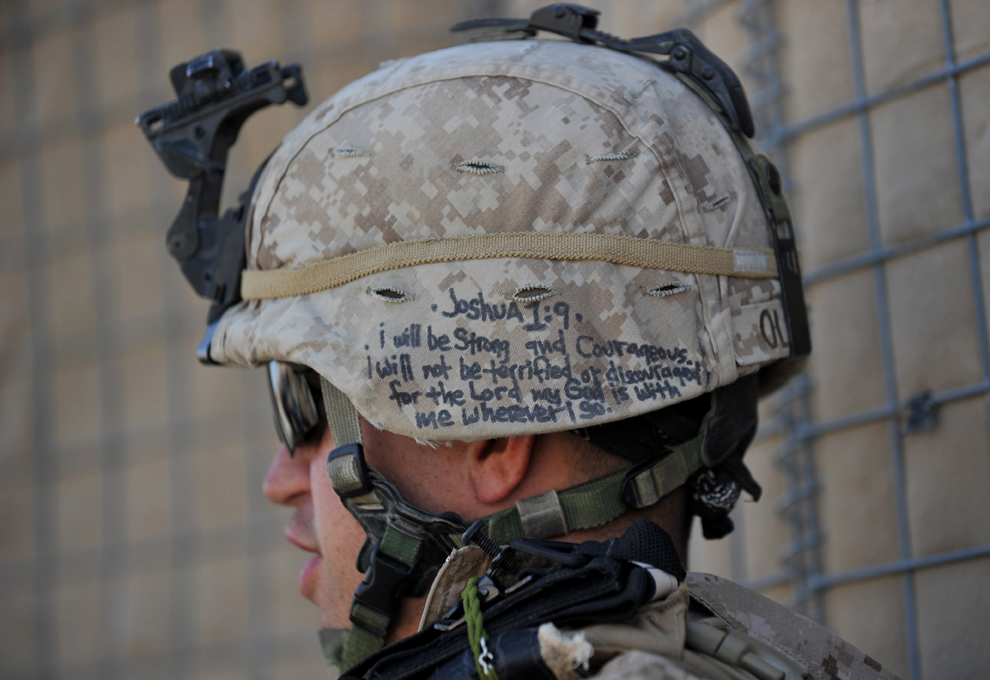Half a million soldiers will soon trade their M4 for an enhanced version of the Special Operations Command M4A1. The Army also will replace its 600,000 M16s with the enhanced M4A1 — or something better.
These are among a dozen changes that will provide soldiers a lighter and more lethal arsenal in the coming years.
M4 upgrades will start with SOCOM’s M4A1, which has a heavy barrel and automatic fire. The heavier barrel reduces warping and erosion, resulting in better performance and longer life. It also allows for a higher sustained rate of fire.
The Army is bettering SOCOM’s M4A1 by adding ambidextrous controls and improvements to the bolt, bolt carrier and forward rail to increase the carbine’s effectiveness and accuracy.
It will take about 10 years to retrofit the entire inventory, said Col. Douglas Tamilio, project manager for soldier weapons.
Replacing M16s will start in 2014 as the Army looks to “pure fleet” with carbines. The big question is whether the M4A1 or an entirely new weapon will be picked to replace the 600,000 M16s. Tamilio thinks a new carbine will emerge.
“I’m very positive in my outlook that the Army is going to see a new carbine,” he told Army Times. “I really think they’re going to.”
The Army is hosting a $30 million carbine competition to answer that question. All competitors must present their products by mid-August. No caliber restriction has been placed on new designs. They must be at least a 500-meter weapon and have a higher incapacitation percentage.
Weapons that meet production requirements will square off in 18 months worth of “extreme and extensive” tests. Two million rounds will be fired in myriad scenarios. Weapons will be tested to their destruction point and to determine whether they maintain accuracy throughout their life cycle — something the military has not tested before.
Some of the notable competitors include:
• Adaptive Combat Rifle by Remington.
• XCR by Robinson Armament.
• SCAR by FNH.
• M6A4 IAR, or similar variant, from LWRC.
• SR-16 by Knight Armament.
• CM901 by Colt.
When the dust settles, the winner will be measured against the $1,300 M4A1 to determine whether cost and capability warrants a new weapon. Most major manufacturers have carbines that cost less and offer improvements such as interchangeable barrel sizes and multiple calibers.
More weapons improvements
Better carbines are not the only firepower boost headed your way. The Army has a host of new and improved weapons scheduled to come on line in the coming years.“Even with a diminishing budget, we’re pushing a lot of stuff to the field,” Tamilio said. “The next couple of years are going to be very busy with some significant advances.”
Some notable programs include:
• The XM25, or “Punisher,” as it is known in Afghanistan. The Army will put 36 into a battalion in the next 18 months. Fielding will begin in 2014. The total number is undecided, but estimates have stood as high as 12,500 — enough to put one in every squad.
The XM25 has a target acquisition system that calculates range with the push of a button. The data is transferred to an electronic fuse, enabling the 25mm round to explode over the target and rain shell fragments on the enemy.
All five prototypes were sent into theater in November, and the effects were immediate. Brig. Gen. (p) Peter Fuller, Program Executive Office Soldier, called it “a revolutionary weapon” and “a game-changer.” Tamilio said the weapons “performed flawlessly” and had no maintenance issues.
• The M26 modular shotgun. The Army plans to buy 35,000 M26s. The first made their way to units late last year — primarily to military police and engineers, Army officials said. But considering this modular system was largely driven by soldiers of the 10th Mountain Division, troops can expect to see it in close-quarters battle in the near future.
The shotgun weighs half as much as the Mossbergs soldiers now carry and can attach to the M4 in a matter of seconds. It has lethal, nonlethal and door-breaching capability, highlighted by a 3-inch, standoff adapter.
The 12-gauge is single-shot, which means less cleaning and fewer moving parts than one would see in a semiautomatic. The shotgun also comes with three- and five-round magazines that are easy to load, which allows soldiers to change shot selection in fairly short order.
It has a hydraulic butt stock to absorb recoil — a necessary add since the barrel is 7.75 inches. The size would be illegal on the streets, but provides a significant spray that is effective to 25 meters. That’s good news for any soldier who needs to clear a room with one shot.
• The XM2010 sniper rifle. The Army is likely to “pure fleet” its inventory, Fuller said. That means the Army would upgrade its 2,500 M24 sniper rifle chassis to XM2010s. An existing $28 million contract included the funds to allow manufacturer Remington to upgrade or produce 3,600 rifles over five years.
The weapon’s performance has been praised by snipers in Afghanistan, who received the first 250 rifles in December. Of note is the transition from the 7.62mm NATO caliber (.308 Winchester) to a .300 Winchester Magnum, which increased a sniper’s effective range from 800 to 1,200 meters.
• A new precision sniper rifle. Tamilio said he expects the Army to select and start fielding a new PSR in the next three to four years.
Remington, which has long owned the military sniper market, looks to keep its corner on that market with the Modular Sniper Rifle. Its primary competition will come from FNH, which recently unveiled the Ballista.
And the competition between these two will be tight.
Both weapons are modular and multicaliber, able to fire .338 Lapua Magnum, .300 Winchester Magnum and .308 (7.62 x 51mm NATO) calibers. In an era of diminishing defense dollars, the ability to train with the .308 for almost pennies on the round will be a must for any competitor. Both boast user-friendly designs driven by snipers. Both weigh about 17 pounds and both can put a serious dent in your medical record from 1,500 meters.
• An improved Common Remotely Operated Weapon Station, or CROWS. The Army is bumping the ceiling from 11,000 to 18,000 systems. It has 7,575 in service. A Feb. 16 recapitalization solicitation said the five-year contract will see production rates of up to 300 CROWS monthly, with the ability to surge to 500 for limited durations.
Operators can expect to see a significant increase in the weapon’s elevation in the coming year, Tamilio said. Other improvements may include an escalation of force kit, infrared pointer and 360-degree situational awareness with the day and night cameras.
• The XM806 lightweight .50-cal. Crews will see the much-anticipated machine gun by 2014, and possibly in late 2013, Tamilio said.
It cuts the weight of the 128-pound M2 by half and reduces recoil by 60 percent. It also boasts an effective range of 2,000 meters, 170 better than the M2. The machine gun, which has a manual safety, allows for quick barrel changes that do not require adjustments for headspace and timing.
The same safety and barrel-changing benefits will be available to the Army’s 54,000 M2 heavy machine guns, as well. The M2A1 quick change barrel will begin fielding by the end of this year, Tamilio said.
Relief also is on the way for A-gunners tapped to carry the tripod. The new XM205 weighs 13 pounds less than the 44-pound M3 they now carry. The XM205 collapses to less than 50 percent of deployed height.
• A modified M240 light medium-machine gun. This one will have a short barrel and collapsible butt stock, and will enter the force “shortly,” Tamilio said.
The titanium M240L replaced the M240B medium machine gun. It weighs 5.5 pounds less, and the 18 percent reduction does not compromise reliability or range. The M240L has smoother operation and a minimum 50,000-round receiver life.
• Lighter ammo. That’s good news for A-gunners who carry up to 30 pounds of ammo. Half that weight is contained in the shell. Engineers are looking to construct a stainless steel cartridge case that will reduce ammo weight by nearly 20 percent.
The Army’s Armament Research, Development and Engineering Center also is fielding a 5.56mm telescoped ammunition that uses a thin plastic casing instead of the traditional brass shell. This would reduce the weight by 42 percent.
“I’m really excited. There are a lot of good things coming in the small arms arena,” said Tamilio, who recounted how, as a private in 1981, he was given “an M60 that barely worked.”
“The Army is starting to realize that spending money on soldiers is a wise thing to do,” he said. “The future of our Army is going to be more centrally focused versus big, heavy equipment. We will see some great enhancements in terms of technology for our soldiers.”

















